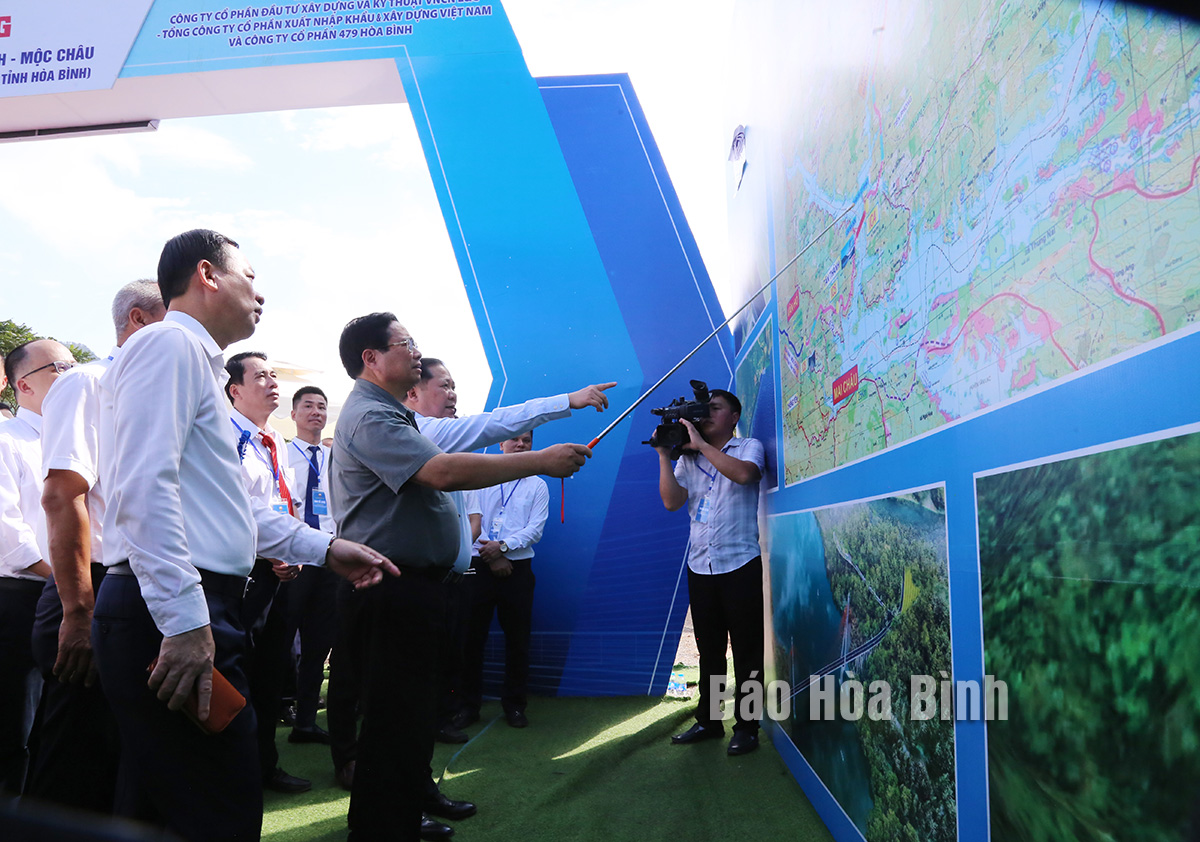



Prime Minister Pham Minh Chinh and leaders of Hoa Binh watch the design of the Hoa Binh-Moc Chau expressway at the launching ceremony of the project’s section crossing Hoa Binh.
Project of strategic significance in Northwestern region
The Hoa Binh-Moc Chau expressway starts in Da Bac township of Hoa Binh and ends at Chieng Yen commune in Van Ho district of Son La province. It includes tunnels and special bridges, including a 1.2km Hoa Son bridge spanning Hoa Binh Lake, which is expected to become the cable-stayed bridge with the longest main span (550m), and the highest bridge tower in Vietnam (187m).
The expressway is designed to have four lanes, enabling vehicles to travel at 80km per hour.
The project is of great importance to the socio-economic development of Hoa Binh. According to Bui Van Khanh, Deputy Secretary of the provincial Party Committee and Chairman of the provincial People’s Committee, the project will help optimise the potential and strengths in tourism and service development in Hoa Binh and Son La provinces, attracting and exploiting unused land plots, creating momentum for socio-economic development of Hoa Binh, and gradually completing the province's transport infrastructure network.
Particular, the expressway plays an important role in connecting the economic and administrative centres of Hoa Binh with Moc Chau tourist area, he said, adding that in the future, it will create a comprehensive impact on socio-economic development, increasing State budget revenue, and creating jobs for local workers during the construction and exploitation of the project.
Along with opening up new opportunities and development space for Hoa Binh, the Hoa Binh - Moc Chau Expressway also has strategic significance in promoting the socio-economic development of the Northwestern region and ensuring national defence and security.
At the groundbreaking ceremony of the project, Prime Minister Pham Minh Chinh pointed to six major significant aspects of the project, including creating new growth momentum and development space, connecting the northern midland and mountainous region with the Red River Delta and the central region, thereby reducing logistics costs and improving the competitiveness of products and the economy, promoting economic restructuring, production and business activities, creating jobs, livelihoods, improving the spiritual and material life of the people, and contributing to building a defence zone, combining national defence and security with economic development in the northwestern strategic region.
Great workload following groundbreaking stage
Following the PM’s direction, the construction of the Hoa Binh-Moc Chau expressway’s section crossing Hoa Binh will be shortened to three years from four years to complete by December 31, 2027. The heavy workload requires great efforts and engagement of the whole political system.
Luong Van Thi, Chairman of the People’s Committee of Da Bac district, underlined the need to step up ground clearance activities. He said that to date, the locality has cleared more than 8km out of 14km of the project site in the district. It will strive to complete the work before November 30, 2024 as directed by the PM, Thi said.
Nguyen Van Duc, Secretary of Xeo village Party cell in Cao Son commune of Da Bac district, said that being aware of the socio-economic significance of the project, local residents of Xeo village have pledged to support the project and make contributions to its construction to ensure its progress.